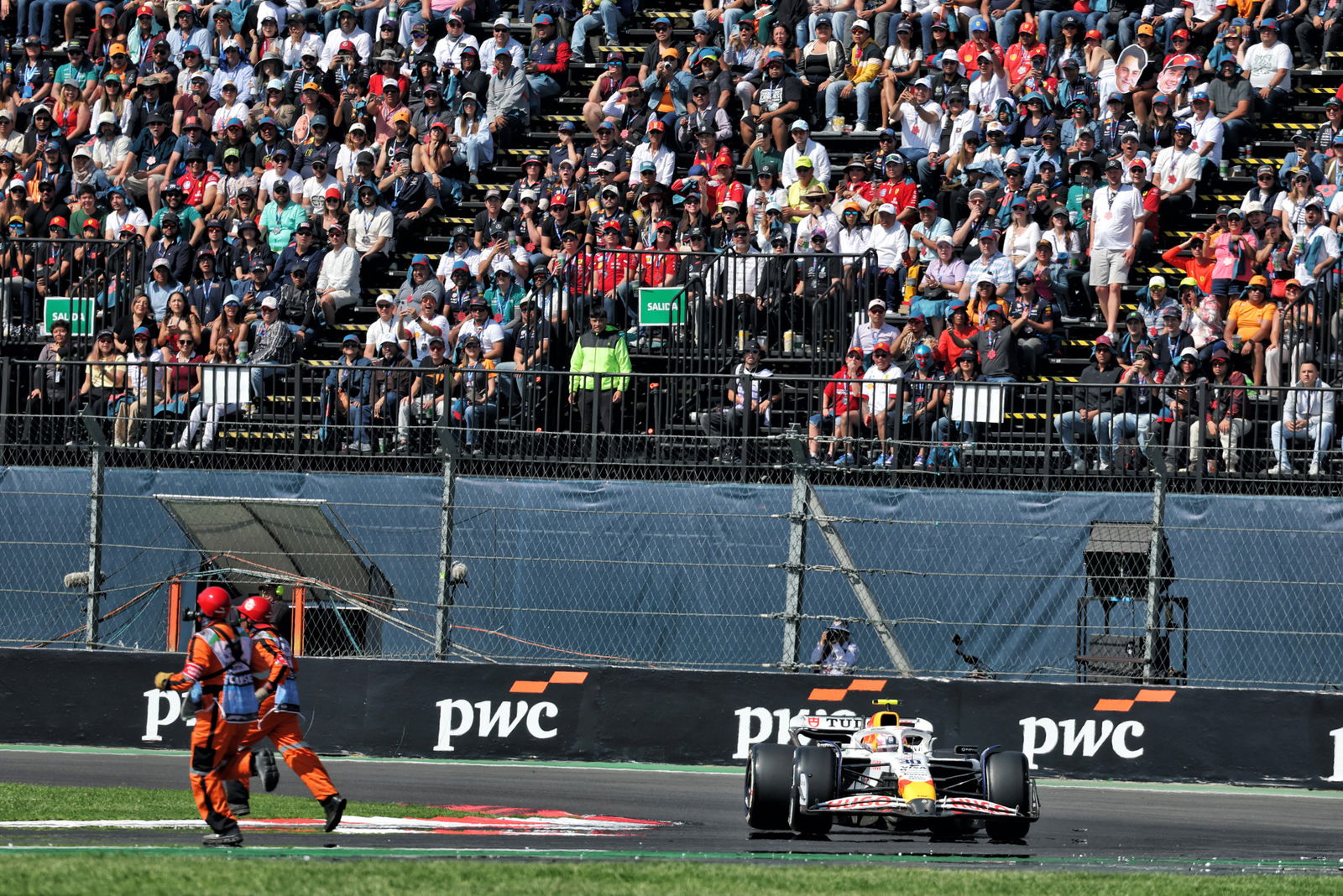
Liam Lawson avoids marshals during the Mexico City GP. Image: XPB Images
The early-race scare occurred on the exit of Turn 1, shortly after Lawson had pitted to replace a broken front wing following contact with Carlos Sainz.
After rejoining the circuit on fresh tyres, Lawson encountered marshals clearing debris from the opening lap.
“Wait, the fuck? Oh my God, are you kidding me? Did you just see that? I could’ve fucking killed him, mate,” Lawson exclaimed over team radio.
He later described the incident after the race as “so dangerous” and “pretty unacceptable,” adding that Racing Bulls would be requesting an explanation from the FIA.
“Yeah, for sure. We obviously can’t understand how on a live track, the marshals can be allowed to just run across the track like that,” he said.
“So yeah, I have no idea why, but I’m sure we’ll get some explanation, but it really can’t happen again.”
The FIA released a statement acknowledging the incident and said race control had acted with the safety of marshals in mind, but that further review is required.
“Following a Turn 1 incident, Race Control was informed that debris was present on the track at the apex of that corner,” the statement read.
“On lap 3, Marshals were alerted and placed on standby to enter the track and recover the debris once all cars had passed Turn 1.
“As soon as it became apparent that Lawson had pitted, the instructions to dispatch marshals were rescinded, and a double yellow flag was shown in that area.
“We are still investigating what occurred after that point.”
The governing body also issued a separate explanation for a late-race Virtual Safety Car.
On the penultimate lap of the grand prix, Sainz spun and brought his Williams to a halt in the stadium section, leaving the car in an exposed position.
Why the Virtual Safety Car was used on Lap 70 in Mexico… ⚠️⤵️
Carlos Sainz spun and stopped at Turn 14 and the car began smoking, meaning marshals would need to enter the track causing a VSC to be deployed 👇#F1 #MexicoGP pic.twitter.com/WspBSb8Zyz
— Formula 1 (@F1) October 27, 2025
Race control quickly deployed a VSC to allow marshals to safely recover the car, which was reported to be emitting smoke and presenting a potential fire risk.
The VSC came at a crucial moment, with Max Verstappen closing on Charles Leclerc for second and Oscar Piastri chasing Oliver Bearman for fourth.
Neutralising the race prevented any final-lap attacks, ending only once Sainz’s car had been safely removed behind the barriers.
The FIA clarified that the decision followed standard safety procedures and was necessary to protect both marshals and competitors while handling the stricken vehicle.
“The car subsequently began smoking and race control received notifications of fire, making it clear that marshal intervention would be required for recovery,” the FIA explained.
“As is standard procedure when marshals are deployed to recover a car, the race is neutralised, in this case, a Virtual Safety Car (VSC) was triggered until the car was moved to a safe location behind the barriers.
“The VSC ended as soon as the car was in a protected position, and the race concluded under green-flag conditions.”
Piastri loses F1 points lead as Norris dominates Mexico GP

